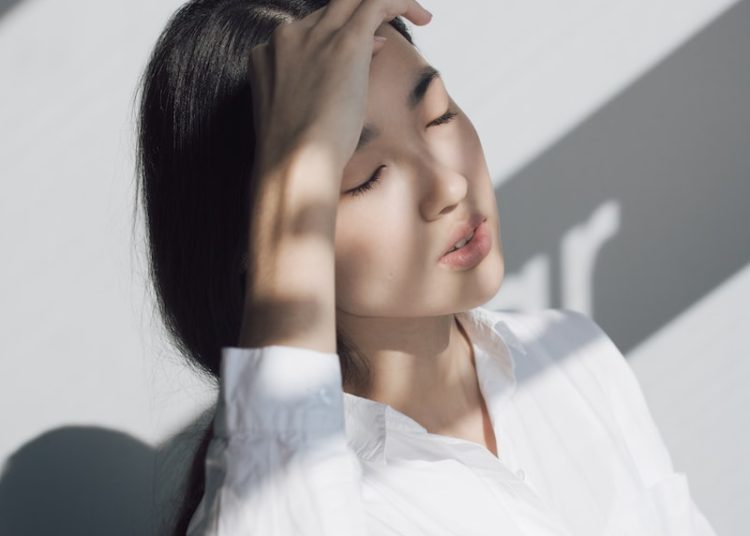Korean skincare, also known as K-beauty, has gained widespread popularity in recent years for its innovative and effective approach to skincare. Best Korean Skin Care Routine for Teen Girls, with an emphasis on multiple steps and layering products, aims to nourish, protect, and rejuvenate the skin. This routine has gained popularity worldwide for its thorough and comprehensive nature, which seeks to achieve healthy and radiant skin
Developing a skincare routine at a young age is crucial for maintaining healthy skin in the long-term. Teenagers are at a stage where their skin is still developing and can be prone to issues such as acne and oiliness. By establishing a proper skincare routine, teenagers can address these issues and promote a healthy, clear complexion.
Let’s Start The Journey- The Best Korean Skin Care Routine for Teen Girls
Embarking on the journey to healthy and radiant skin is an exciting step for all teen girls, and the world of Korean skincare offers a treasure trove of effective and delightful routines. By adopting the best Korean skin care routine for teen girls, you can pamper your skin with a holistic approach that focuses on achieving a youthful glow while maintaining its natural balance. So first of all,
Understanding Teen Skin
Teenage skin is different from adult skin in several ways. One of the main differences is the level of oil production. Teenagers tend to have more active oil glands, which can lead to an oily complexion and increase the risk of acne. Additionally, teenage skin is more susceptible to environmental factors such as UV rays and pollution, which can cause damage and lead to premature aging.
Acne is one of the most common skin concerns for teenagers. It is caused by a combination of factors such as hormones, genetics, and improper skincare. Acne can appear as whiteheads, blackheads, pimples, and cysts, and can be found on the face, neck, chest, and back.
Another common concern for teenage skin is oiliness. This can lead to clogged pores, blackheads, and acne. It can also make the skin appear shiny and greasy.
Teenagers also have to deal with other skin concerns such as dryness, dullness, and uneven skin tone, which can be caused by hormonal changes, diet and lifestyle, and exposure to environmental factors.
It’s important to note that every teenager skin is different and it’s crucial to identify the specific concerns and to find the right products that suit the skin’s needs.
The Best Korean Skin Care Routine For Teen Girl Step By Step
A Korean skincare routine for teenage girls can be broken down into the following steps:
- Double cleansing: Begin by using an oil-based cleanser to remove makeup and excess oil, followed by a foam or gel cleanser to thoroughly cleanse the skin.
- Exfoliation: Once or twice a week, use a gentle chemical exfoliant such as AHA or BHA to remove dead skin cells and unclog pores.
- Toning: Use a toner to balance the skin’s pH and prepare it for the next steps.
- Essence: Apply an essence to provide hydration and nourishment to the skin.
- Serums and Ampoules: Use a serum or ampoule that targets specific skin concerns such as acne, pigmentation, or hydration.
- Sheet Mask: Once or twice a week, apply a sheet mask to provide an intense hydration boost to the skin.
- Eye Cream: Apply a gentle eye cream to moisturize and protect the delicate skin around the eyes.
- Moisturizer: Apply a lightweight moisturizer to lock in hydration and protect the skin from environmental stressors.
- Sunscreen: Apply a sunscreen with at least SPF 30 to protect the skin from UV rays.
It’s important to note that this is a general guideline and it’s crucial to pay attention to the skin’s needs and adjust the routine accordingly. It’s also important to use products that are suited to your skin type and to be consistent with the routine for best results.
Cleansing
Cleansing is the first and most important step in any skincare routine. It removes dirt, oil, and makeup from the skin, helping to unclog pores and prevent acne. Cleansing also prepares the skin to better absorb the products that come after it.
There are several types of cleansers available, including:
- Foaming cleansers: These are good for oily skin as they help to remove excess oil and dirt.
- Gel cleansers: These are lightweight and gentle on the skin and are suitable for normal to oily skin.
- Cream cleansers: These are hydrating and nourishing, making them a good option for dry and sensitive skin.
- Oil-based cleansers: These are great for removing makeup and are suitable for all skin types.
- Micellar water: These are gentle, non-rinse cleansers that work well for all skin types, especially sensitive skin.
It’s important to choose a cleanser that is suited to your skin type, as using the wrong type of cleanser can cause irritation, dryness, and breakouts. It’s also crucial to use lukewarm water when washing the face and avoid using hot water, as it can strip the skin of its natural oils.
Additionally, it’s essential to cleanse the skin twice a day, once in the morning and once before bed, to ensure a clean and healthy complexion.
Exfoliation
Exfoliation is the process of removing dead skin cells from the surface of the skin. This can be done physically or chemically.
Exfoliating has several benefits for teenage skin, including:
- Unclogging pores: Dead skin cells can accumulate and clog pores, leading to acne and blackheads. Exfoliating removes these cells, helping to prevent breakouts.
- Improving skin texture: Exfoliating can help to smooth and even out the skin’s texture, making it look brighter and more youthful.
- Boosting circulation: Exfoliating helps to increase blood flow to the skin, which can promote a healthy glow.
There are two main types of exfoliants: physical and chemical.
- Physical exfoliants: These are scrubs that use particles such as sugar, salt, or beads to physically remove dead skin cells. They are good for removing blackheads and whiteheads, but can be too harsh for sensitive skin.
- Chemical exfoliants: These are products that use acids such as AHA, BHA, or enzymes to dissolve the bonds between dead skin cells. These are suitable for all skin types and are gentle on the skin.
It’s important to use exfoliants in moderation, once or twice a week, depending on the skin’s tolerance. Over-exfoliating can lead to irritation, dryness, and even breakouts. It’s also crucial to pay attention to the skin’s response and adjust the frequency of exfoliating accordingly. When using physical exfoliants, use gentle circular motions and avoid scrubbing the skin too hard. When using chemical exfoliants, follow the instructions on the product and start with a low concentration of acid.
It’s also essential to use sunscreen when using chemical exfoliants as they can make the skin more sensitive to the sun.
Hydration
Hydration is essential for maintaining healthy, youthful skin. Teen girls skin can be prone to oiliness, which can make it difficult to maintain proper hydration levels. However, it’s important to remember that oil and hydration are two separate things. The skin can be oily and dehydrated at the same time.
To keep the skin hydrated, it’s important to use products that contain ingredients such as hyaluronic acid, glycerin, and aloe vera. These ingredients can help to attract and retain moisture in the skin.
There are several types of hydrating products available, including:
- Serums: These are lightweight, fast-absorbing liquids that can deliver a high concentration of hydrating ingredients to the skin.
- Lotions: These are lighter than creams and are suitable for oily and combination skin types.
- Creams: These are thicker than lotions and are suitable for dry and sensitive skin types.
- Masks: These are applied to the skin for a specific amount of time and can provide an intense hydration boost.
It’s important to use hydrating products consistently, both morning and night, to ensure that the skin stays properly hydrated. It’s also crucial to pay attention to the skin’s needs and adjust the products accordingly.
Additionally, it’s important to drink enough water throughout the day as hydration from the inside out is also crucial for maintaining healthy skin.
Sun Protection
Protecting the skin from the sun’s harmful ultraviolet (UV) rays is crucial for maintaining healthy, youthful skin. UV rays can cause damage to the skin, leading to premature aging, sun spots, and an increased risk of skin cancer.
Sunscreen is the most important product for protecting the skin from the sun. Sunscreen works by absorbing or reflecting UV rays before they can damage the skin. It’s important to choose a sunscreen that has a sun protection factor (SPF) of at least 30 and provides broad-spectrum protection, which means it protects against both UVA and UVB rays.
There are two types of sunscreens: chemical and physical.
- Chemical sunscreen: These contain ingredients that absorb UV rays. They are usually lightweight and easy to apply, but can cause irritation for sensitive skin.
- Physical sunscreen: These contain ingredients such as zinc oxide and titanium dioxide that sit on the surface of the skin and reflect UV rays. They are gentle on the skin but can be thicker and harder to blend.
Sunscreen can be applied on its own or as an ingredient in other skincare products such as moisturizers and makeup. Many moisturizers and makeup products now include SPF as an ingredient, which can provide an extra layer of sun protection.
It’s important to apply sunscreen every day, especially when spending time outdoors, and to reapply every 2 hours or after swimming or sweating. It’s also crucial to pay attention to the expiration date of the sunscreen as it may lose its effectiveness over time.
In addition to using sunscreen, it’s also important to limit time in the sun during peak hours, wear protective clothing and accessories, and seek shade when possible.
Conclusion
In conclusion, With Korean skin care routine for teen girls, a skincare routine is crucial for maintaining healthy skin in the long-term. The Korean skincare routine for teen is a popular and effective approach that focuses on nourishing, protecting, and rejuvenating the skin.
Teenagers have unique skin concerns such as acne, oiliness, and sun damage, which can be addressed by establishing a proper skincare routine. The routine should consist of cleansing, exfoliating, hydrating, and sun protecting steps.
It’s important to understand the differences between adult and teenage skin and to choose products that are suited to your skin type. Consistency is key, and it’s essential to follow the routine every day, both morning and night.
It’s also important to pay attention to the skin’s response and adjust the products and the frequency of use accordingly.
In summary, a good skincare routine for teenagers should include a gentle cleanser, a mild exfoliant, a hydrating product, and a sunscreen. It’s crucial to be consistent with the routine and pay attention to the skin’s needs. Remember that everyone’s skin is different and it’s essential to find a routine that works for you.


























